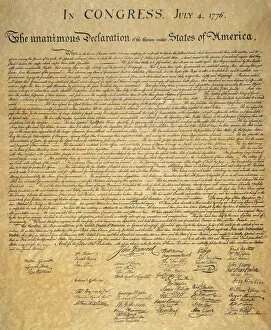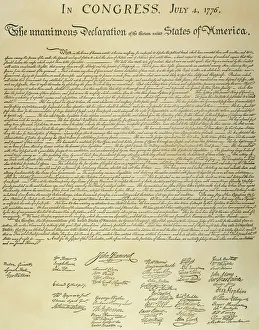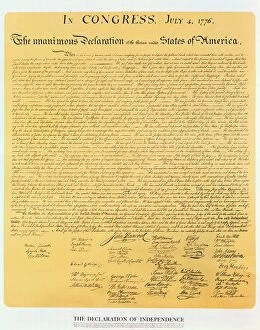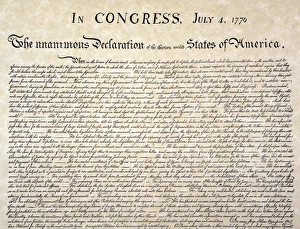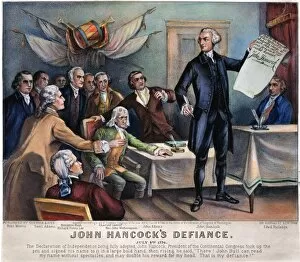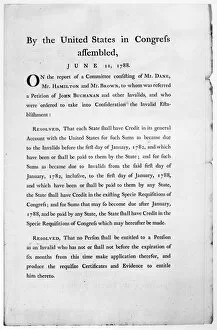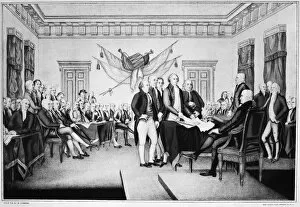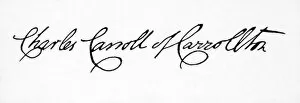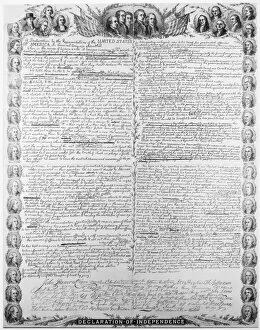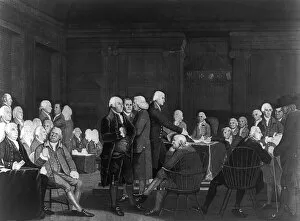Second Continental Congress Collection
"The Second Continental Congress: Paving the Path to Independence" On 4 July 1776
All Professionally Made to Order for Quick Shipping
"The Second Continental Congress: Paving the Path to Independence" On 4 July 1776, history was made as the Second Continental Congress gathered in Philadelphia's Independence Hall. Amongst the esteemed delegates, a signed copy of the Declaration of Independence marked a pivotal moment for the thirteen United States of America. This powerful document boldly declared their separation from British rule and laid the foundation for a new nation. The significance of this occasion is immortalized through various artistic representations throughout history. A lithograph by Currier & Ives captures John Hancock's defiant signature on that fateful day in 1876, showcasing his unwavering commitment to freedom. The Fitzwilliam copy of the Olive Branch Petition from 1775 serves as a reminder that peaceful resolutions were sought before resorting to independence. Independence Hall itself stands proudly in Philadelphia, serving as an enduring symbol of liberty and democracy. Its image graces Le Costume Ancien et Moderne, emphasizing its historical importance and architectural beauty. Even currency pays homage to this monumental event; on the back of a U. S. Two-dollar note, we see an illustration depicting those brave individuals signing their names with determination at Independence Hall. Henry A. Ogden's drawing transports us back to that very room where these courageous men put pen to paper, forever changing the course of American history. In addition to these visual representations lies evidence within written records such as Franklin Credentials from 1778—a letter affirming Benjamin Franklin's role in representing America abroad during these tumultuous times. Over time, celebrations have emerged around this historic date—Independence Day—an annual commemoration filled with pride and patriotism across our great nation since its engraving in 1853. The Second Continental Congress remains an indelible chapter in American history—a gathering that united thirteen colonies under one cause: freedom from tyranny. Their actions paved the way for future generations who would continue striving towards equality and justice for all.

